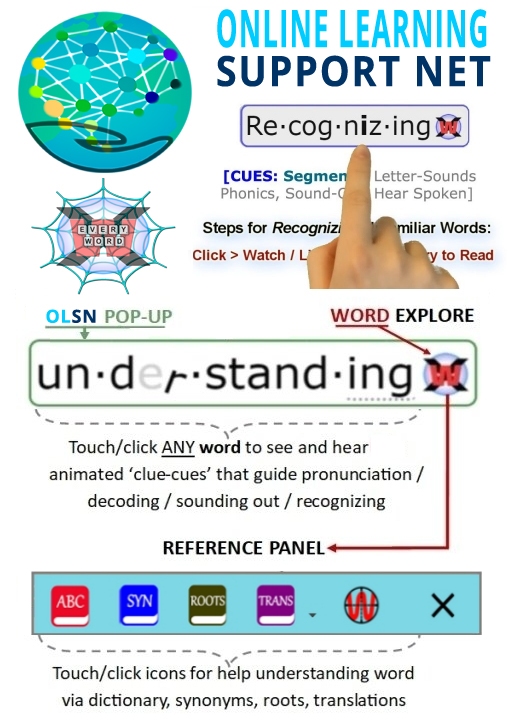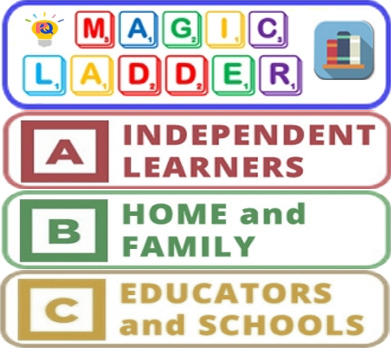Matthew Effects
Note: Remember to click on any word on this page to experience the next evolutionary step in technology supported reading.
Matthew Effects in Reading: Some Consequences of Individual Differences in the Acquisition of Literacy
A framework for conceptualizing the development of individual differences in reading ability is presented that synthesizes a great deal of the research literature. The framework places special emphasis on the effects of reading on cognitive development and on “bootstrapping” relationships involving reading. Of key importance are the concepts of reciprocal relationships – situations where the causal connection between reading ability and the efficiency of a cognitive process is bidirectional – and organism-environment correlation – the fact that differentially advantaged organisms are exposed to nonrandom distributions of environmental quality. Hypotheses are advanced to explain how these mechanisms operate to create rich-get-richer and poor-get-poorer patterns of reading achievement. The framework is used to explicate some persisting problems in the literature on reading disability and to conceptualize remediation efforts in reading.
Keith Stanovich, Canada’s Research Chair of Applied Cognitive Science at the Department of Human Development and Applied Psychology, University of Toronto. (see COTC interview: http://www.childrenofthecode.org/interviews/stanovich.htm )
The Matthew Effect
The Matthew Effect was described by Wahlberg and Sty and Keith Stanovich in the domain of reading. It essentially describes what happens to young children when we see the educational disparities that occur and the educational advantages. The Matthew Effect describes what happens over time when some children enter into a positive feedback loop, whereby those who learn to read and break the code with relative ease experience a positive affect and are able to read the text that they are given in schools with fluency. That fluency develops a level of automaticity and because they develop automaticity with sounds and words they’re cognitive work space is freed to operate on the meaning of print, the purpose of why children are engaged in it. And so the world opens up to children who have that cognitive space left, who have automatized the code and words.
The converse of this Matthew Effect that Stanovich outlined in the mid eighties where he developed a model of the educational have’s and have not’s in reading is a sadder tale. Those children who experience inordinate difficulty in breaking the code, who aren’t able to quickly assemble these sounds and put them into larger units we call words, and rapidly proceed through the sentences don’t develop the level of automaticity that allows them to have the cognitive work space available to them. As a result of that lack of automaticity, their resources are taken away and focused on the word level and they aren’t able to operate on the meaning.
So, as a result they find reading to be discouraging, it’s less satisfying and this feedback loop begins where because it’s not pleasurable, because it’s difficult, they don’t engage in it. And because they don’t engage in it as often they don’t develop the automaticity and on and on you go. Now that’s even further compounded by the fact that these educational have not’s are given material that’s well beyond their reading ability. So, the cycle gets exacerbated because we don’t tack or calibrate children’s reading level with the print we give them. And so the cycle just gets worse and worse.
Anne Cunningham, Director of the Joint Doctoral Program in Special Education with the Graduate School of Education at the University of California-Berkeley. Source: COTC Interview – http://www.childrenofthecode.org/interviews/cunningham.htm#MatthewEffect
Downward Spiral of Shame
In our study what we found was that children who made this break through, who broke the code early on in first grade, not only became better readers in high school, which is what we’d predict, but they engaged in print more. So, one of the phenomenal findings of this particular study was that ten years later we could see that those children who broke the code early on began this Matthew Effect, this cycle of engaging in print and because they engaged and were successful in it they enjoyed it and because they enjoyed it they had positive affect and so presumably they practice it more and more. Because they practice it more and more their vocabulary grew, their level of verbal intelligence increased and so when they came upon some complex ideas or complex words, vocabulary items they may not have known, they had the cognitive space to think about, well what does that word mean and then attach it to a similar word so that they can then build their lexicon in a way that allows them to progress through out time.
Not only do we see that they’re better readers, but that they engage in it more. And that’s what we want to promote because what we see in the Matthew Effects is everyone benefits. So that even the relatively poor reader, the child or student whose comprehension is not as good as the student sitting next to them can still grow and develop in their reading ability, but also their verbal intelligence just by staying with it and just by engaging in print on a daily basis.
Anne Cunningham, Director of the Joint Doctoral Program in Special Education with the Graduate School of Education at the University of California-Berkeley. Source: COTC Interview – http://www.childrenofthecode.org/interviews/cunningham.htm#DownwardSpiralofShame
The Matthew Effect 2
… About the Matthew Effect, it’s not that children are doomed to experience the Matthew Effect if they don’t learn to read early on. But the likelihood is there that if you don’t get out of the gate early, you won’t engage in print early on. And if we changed our educational system to accommodate and diminish the social comparison and shame, that we would have a much greater opportunity of catching all these children developmentally.
Anne Cunningham, Director of the Joint Doctoral Program in Special Education with the Graduate School of Education at the University of California-Berkeley. Source: COTC Interview – http://www.childrenofthecode.org/interviews/cunningham.htm#ATechnologicalInterfaceLearninProce













